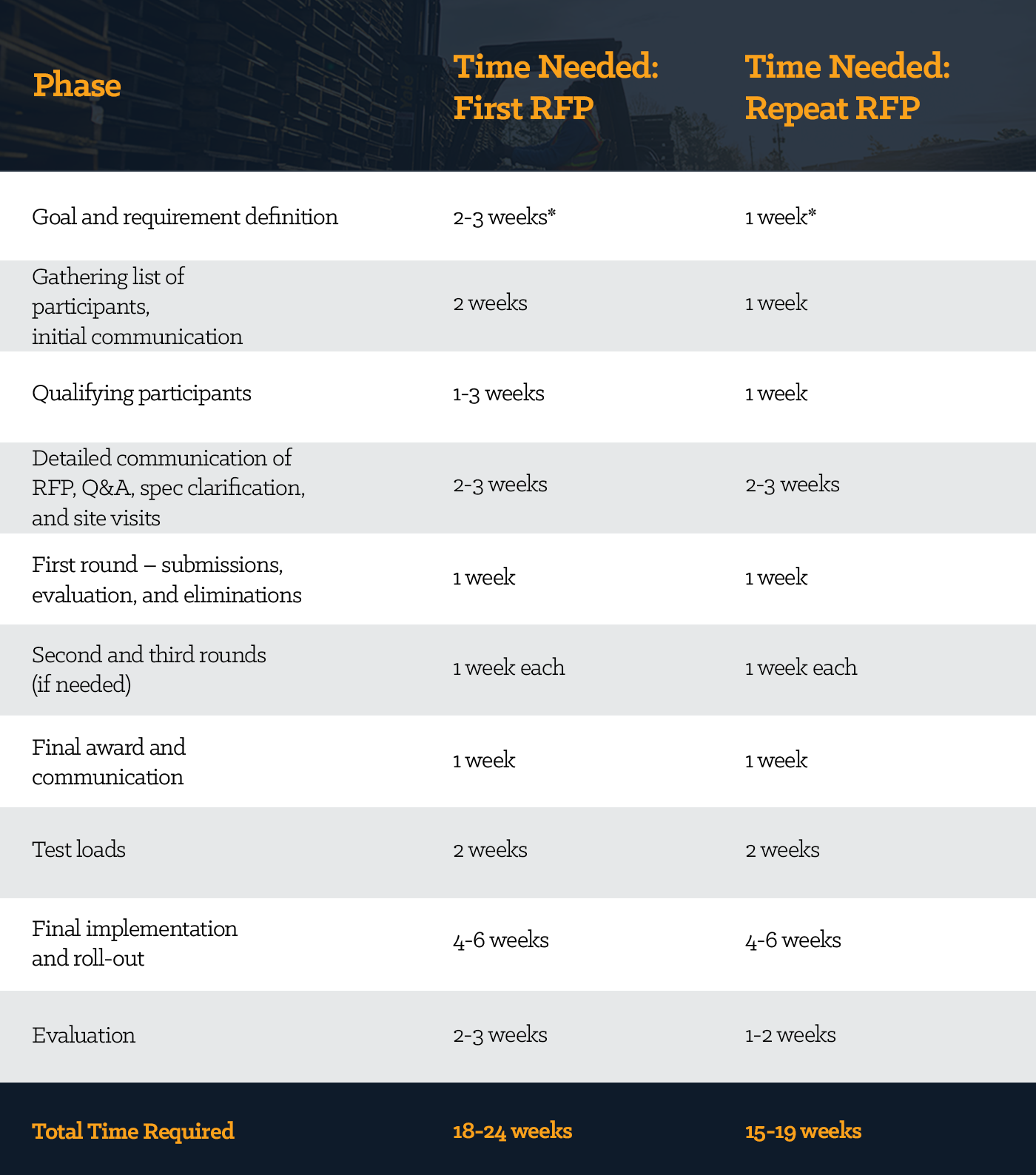Make Time to Build a Realistic Timeline [SERIES]
This is the third post in our series on running a successful and effective RFP. The previous post covered communicating with internal stakeholders.
Oftentimes, companies are rushed to complete the RFP process. When the schedule is designed to meet an arbitrary deadline, rather than the end goal, it can sabotage the entire process. Learn how to allow enough time for your RFP to get the right results.
Have you done request for proposals (RFPs) in the past and they just didn’t go as smoothly as you wanted? Or, are you planning an RFP and have no idea how much time to budget?
If you answered yes to either of these questions, don’t worry. You’re not alone. RFPs are not the easiest of corporate projects to manage, which is exactly why 48forty has prepared this guide on how to conduct successful RFPs. Part 3 of our series is on something we never have enough of:
Time.
We live in an on-demand world where we want what we want when we want it. Whether it’s tickets to a movie, dinner reservations or pricing on pallets. Apps have made one and two easy to do, but so far no one has developed an app to deliver instant pallet RFPs. (At least, not that I know of.)
There isn’t a one size fits all solution for RFPs. The best way to get the results that align with your goals and objectives is to make time to build a realistic timeline.
Stay Focused on your Goal
So often RFP timelines are built by working backwards from a predetermined, sometimes arbitrary date. While this practice isn’t in itself a problem, it does not take into account the various steps required by an RFP. Leaving out steps or underestimating how long each phase will take can create a time crunch and short change the process.
We’ve seen the following things get in the way of realistic RFP timelines:
- This is the first time you’ve put your pallets out for bid.
- The RFP is a last minute request by upper management.
- The fiscal year end has snuck up on you.
- The RFP completion date is miscommunicated so you need to scramble.
- Confusing or vague scope that needs to be clarified.
- Current supplier unexpectedly cancels an existing contract, creating a need.
- Unexpected price increases from current supplier spark need for lower-priced replacement.
- Your business has changed and you need to assess before determining a supplier.
Any of that sound familiar?
Too often companies are rushed from the start, and don’t allot enough time to each activity. That’s because they build a plan and schedule that serves the deadline instead of the desired outcome. The result is a rushed process in which critical information is omitted, creative solutions are ignored and post-award cleanup is inevitable.
While it might seem tough at the outset, build consensus internally and outline your expectations. (Again, refer to our previous post for more on that topic.) That way, everyone is invested in the RFP process, rather than just going through the motions to meet a deadline. Another way to approach building the timeline is to keep your team focused on the problem (or problems) you are trying to solve with a new pallet supplier. Making sure your RFP timeline accounts for getting the answers to everything needed to solve that problem will make it more successful for all involved.
So the million-dollar question is: how early should you start planning your RFP?
While it depends on the size of your company, volumes, complexity of requirements, the following chart offers typical time allotments for each phase of a pallet RFP. If this is your first large RFP, you’ll need more time, of course, but even repeat RFPs need more time than they’re often given, as pallet needs change frequently.
 *Depending upon scope, number of locations and variety of footprints, time required may vary greatly
*Depending upon scope, number of locations and variety of footprints, time required may vary greatly
Based on 48forty’s experience, you will need from 16-24 weeks to conduct a thorough RFP that yields the desired results and avoids pitfalls that can lead to renegotiating contracts post RFP. We encourage you to share this timeline with your team so everyone understands the steps and time required to complete each one. When everyone’s on the same page, it’s much easier to make the time for a realistic timeline.
The next topic in our series on how to run a successful RFP focuses on how to create a detailed scope of work and why it’s needed.

